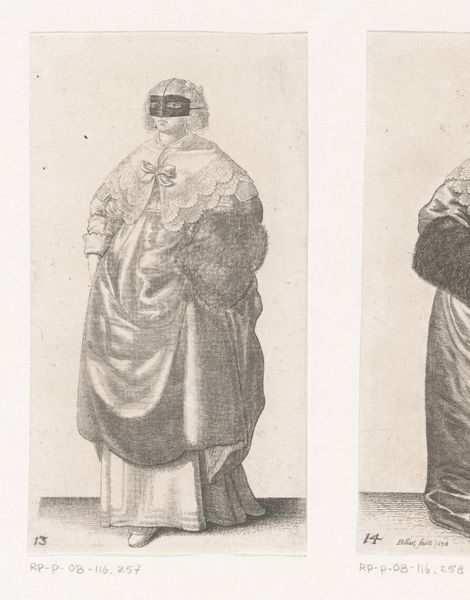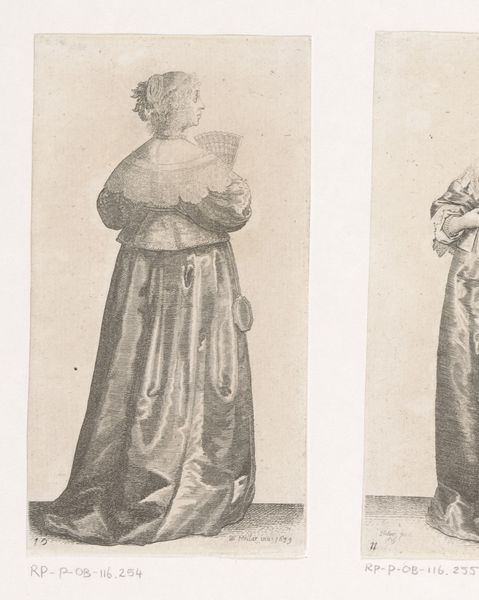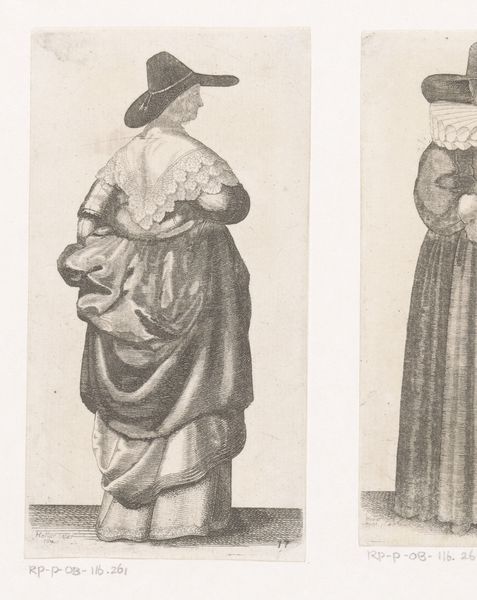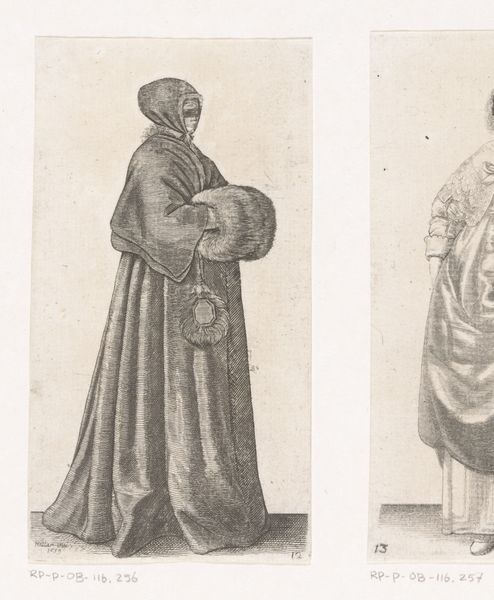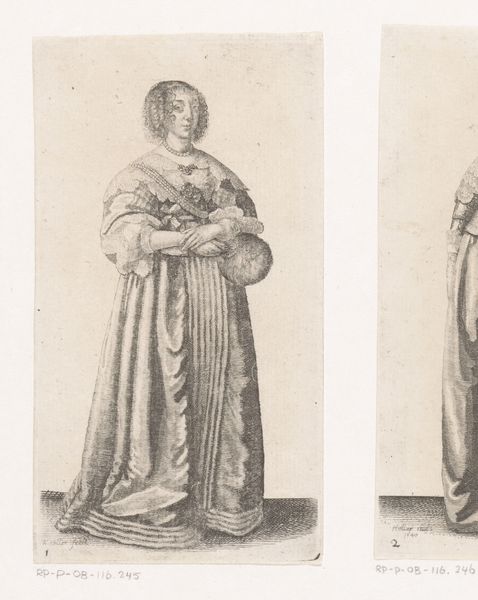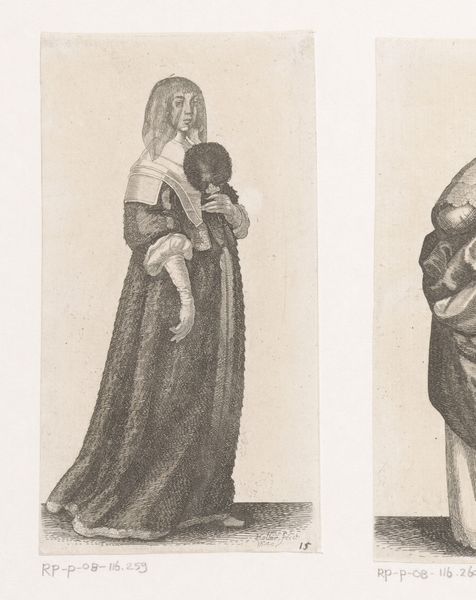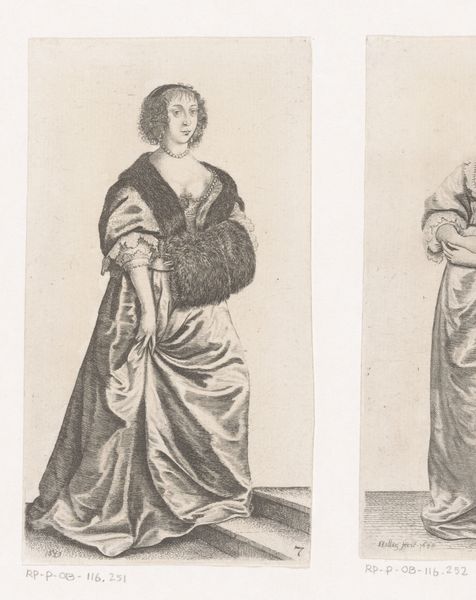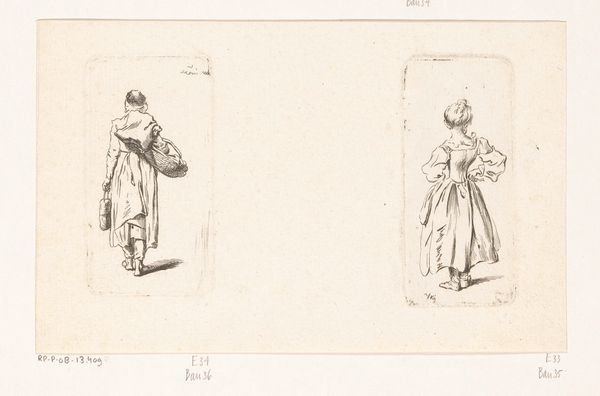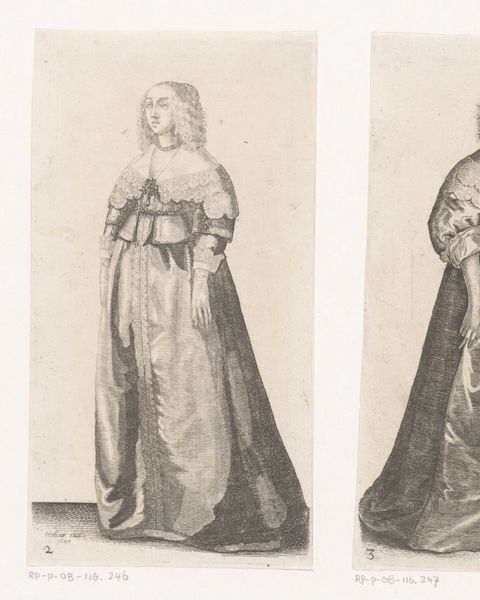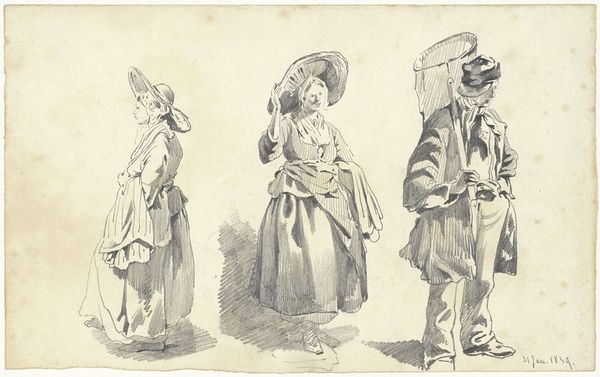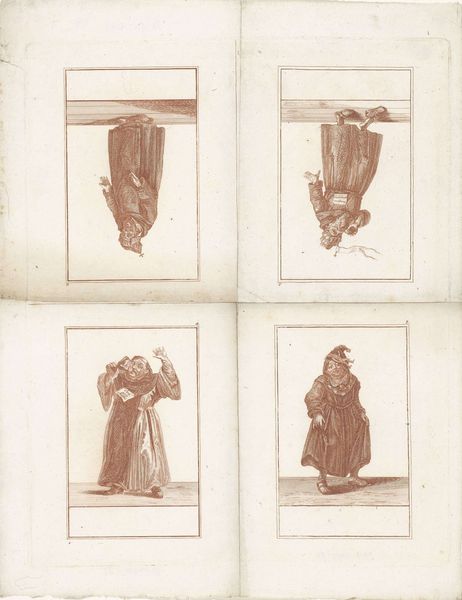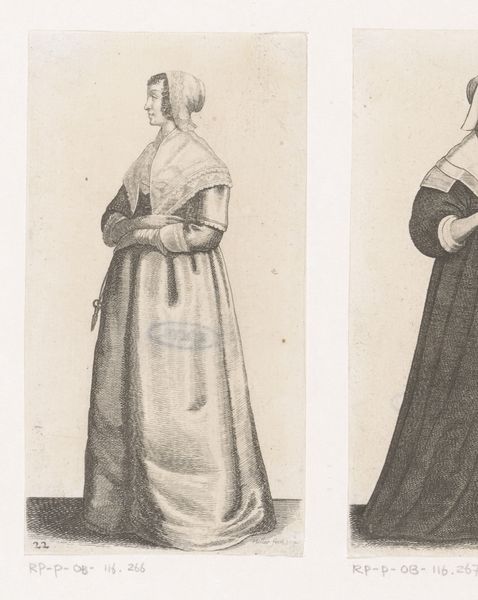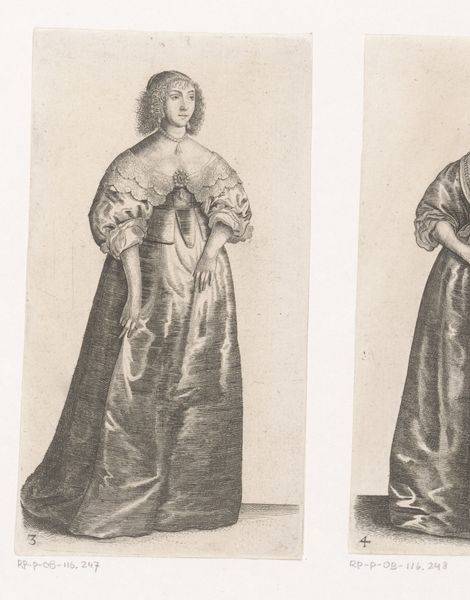
Engelse vrouw van stand met gedeeltelijk loshangend haar, op de rug gezien 1640 - 1707
0:00
0:00
print, engraving
#
portrait
#
baroque
# print
#
dress
#
engraving
Dimensions: height 134 mm, width 72 mm
Copyright: Rijks Museum: Open Domain
Curator: Wenceslaus Hollar, sometime between 1640 and 1707, rendered this print titled, "Engelse vrouw van stand met gedeeltelijk loshangend haar, op de rug gezien," or "English woman of rank with partially loose hair, seen from the back." It's currently held here at the Rijksmuseum. Editor: Immediately, I'm struck by how much the clothing dominates. The sheer volume and shape of the dress are so emphasized—it almost seems like the woman is secondary, an armature for displaying this fabric. Curator: That’s a perceptive observation. The Baroque era did love its display. This image becomes a kind of signifier for status. Consider how hair, though "partially loose," is still styled and adorned, signalling refinement. Editor: And think about the labor involved in that lace collar, the skill and time dedicated to its production! This engraving, then, is not just of a woman, but of a whole system of craftsmanship and social hierarchy rendered in ink. Curator: Precisely. Hollar, as a skilled engraver, translated the visual language of the court into reproducible images. The way she's viewed from the back makes her slightly anonymous; she becomes an archetype of English gentility, viewed as a prized cultural symbol and exported across Europe through such prints. It's as much about promoting an image of England as an actual person. Editor: The materials matter. Engraving allowed for multiples, turning fashion, even identity, into something reproducible, consumable. It shifts the gaze, almost rendering her form immaterial besides what covers her. What messages are imbedded? Curator: Perhaps that respectability resides in social display, especially through apparel, rather than interiority? I find it evocative— this back view obscures emotion but enhances cultural presence and lasting presence. She becomes almost allegorical. Editor: In Hollar's choice to capture the textures and draping, you see a world obsessed with appearances but the focus still on the product. How this informs cultural memory is fascinating, like seeing the echoes of this class’ values in a dress. Curator: I agree. Hollar provides a window into the priorities and aspirations of the 17th-century court. Editor: And offers us today the insight to interpret how appearances make meaning in lasting ways.
Comments
No comments
Be the first to comment and join the conversation on the ultimate creative platform.
